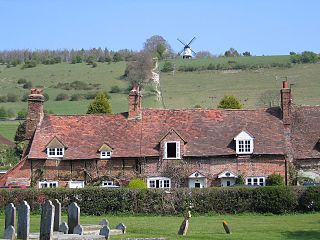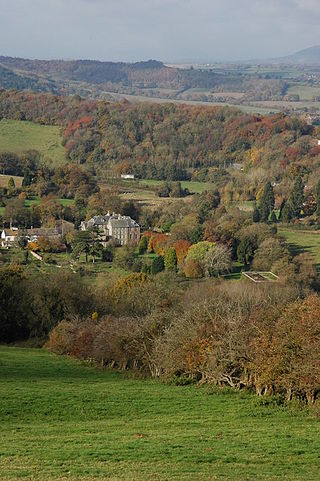Related Research Articles
Sir Richard Bolton was an English lawyer and judge, who was an important figure in Irish political life in the 1630s and 1640s.
Joseph Deane PC (1674–1715) was an Irish politician and judge who became Chief Baron of the Irish Exchequer. His sudden and premature death was popularly believed to be due to a chill caught when watching an eclipse of the sun.

Geoffrey de Turville or de Tourville was an English-born judge and cleric in thirteenth-century Ireland, who held office as Bishop of Ossory and Lord Chancellor of Ireland, and was noted as an extremely efficient administrator. His career has been described as an excellent example of what a clerk in the royal service might hope to accomplish.
Henry Draycott was an English-born Crown official and judge in sixteenth-century Ireland, who held a number of senior Government offices, including Chancellor of the Exchequer of Ireland. Despite his apparent lack of legal qualifications, he also had a successful career as a judge, becoming a Baron of the Court of Exchequer (Ireland) and Master of the Rolls in Ireland. He became a substantial landowner in the Pale, with his principal estate at Mornington, County Meath.

The Court of Exchequer (Ireland) or the Irish Exchequer of Pleas, was one of the senior courts of common law in Ireland. It was the mirror image of the equivalent court in England. The Court of Exchequer was one of the four royal courts of justice which gave their name to the building in which they were located, which is still called the Four Courts, and in use as a Courthouse, in Dublin.
Walter de Islip, or de Istlep was an English-born cleric, statesman, and judge in fourteenth-century Ireland. He was the first Chief Baron of the Irish Exchequer; he also held the offices of Treasurer of Ireland, Chief Escheator, and Custos Rotulorum of Kilkenny. He was a noted pluralist, who held numerous clerical benefices. His career was damaged by accusations of corruption and maladministration. He played an important role in the celebrated Kilkenny Witchcraft Trials of 1324.
Patrick Bermingham (c.1460–1532) was an Irish judge and statesman of the Tudor period who held the offices of Lord Chief Justice of Ireland and Chancellor of the Exchequer of Ireland. He was a firm supporter of English rule in Ireland and enjoyed the confidence of Henry VIII, who regarded him as a mainstay of the Irish administration.
Thomas de Montpellier, or de Monte Pessulano was a fourteenth-century Anglo-French judge and Crown official, much of whose career was spent in Ireland. He held a number of important lay and clerical offices including Dean of St. Patrick's Cathedral, Chancellor of the Exchequer of Ireland and, briefly, Chief Baron of the Irish Exchequer.
Nicholas de Balscote was an English-born official and judge in fourteenth-century Ireland. He attained high judicial office, but his career was damaged by a quarrel with King Edward II.
Thomas Minot, also spelt Mynot or Mynyot was an English-born judge and cleric in fourteenth-century Ireland. He was Archbishop of Dublin from 1363 to 1375. He is chiefly remembered for his extensive restoration works to St Patrick's Cathedral, Dublin, and in particular for rebuilding the Cathedral's tower, which is still called Minot's Tower.
John de Burnham was an English-born cleric, judge and Crown official who spent much of his career in Ireland. He held office as Lord High Treasurer of Ireland and Chief Baron of the Irish Exchequer. He spent many years defending himself against charges of corruption, which seem to have been the invention of malicious colleagues.
Robert le Poer was an Irish judge and Crown official who held the offices of Lord High Treasurer of Ireland and Chief Baron of the Irish Exchequer.
Robert de Holywood was an Irish judge and landowner who held the office of Chief Baron of the Irish Exchequer. He was the ancestor of the Holywood family of Artane Castle, and of the St. Lawrence family, Earls of Howth. He was a substantial landowner with property in Dublin, Meath and Louth. He became extremely unpopular, and was removed from office after numerous complaints of "oppression and extortion" were made against him. These were apparently inspired by his close association in the mid-1370s with Sir William de Windsor, the embattled Lord Lieutenant of Ireland.
Sir Thomas Kent was an Irish judge who held office as Chief Baron of the Irish Exchequer.
Giles Thorndon was a senior official of the English Crown in the fifteenth century, who was noted for his long and loyal service to the House of Lancaster and for his troubled and unsuccessful career as Lord Treasurer of Ireland.

John de Troye was a Welsh-born Crown official and judge in fourteenth century Ireland, who held the offices of Chancellor of the Exchequer of Ireland and Lord Treasurer of Ireland. He was also a leading ecclesiastic, whose most senior clerical office was Chancellor of St. Patrick's Cathedral, Dublin. He was a notable pluralist.
John de Karlell was an English-born cleric, civil servant and judge in fourteenth-century Ireland. He served as second Baron of the Court of Exchequer, and as Chancellor of the Irish Exchequer. He became Chancellor of St Patrick's Cathedral, Dublin, after a struggle for the office with his fellow judge Walter de Brugge.
Nicholas de Clere, or le Clerk was an English-born Crown administrator in the late thirteenth-century Ireland. He was a skilled financier who achieved high Government office, becoming Lord Treasurer of Ireland, but he faced serious charges of corruption, as a result of which he was removed from office. He was ruined financially by the huge debts he owed to the Crown, and spent his last years in prison.

Roger Mainwaring was an English-born judge and Crown servant in Ireland during the reign of Elizabeth I.
Geoffrey of St. John was an English-born clergyman who became Bishop of Ferns.